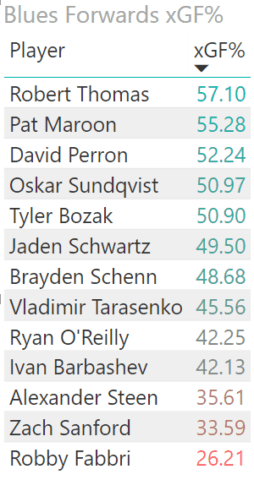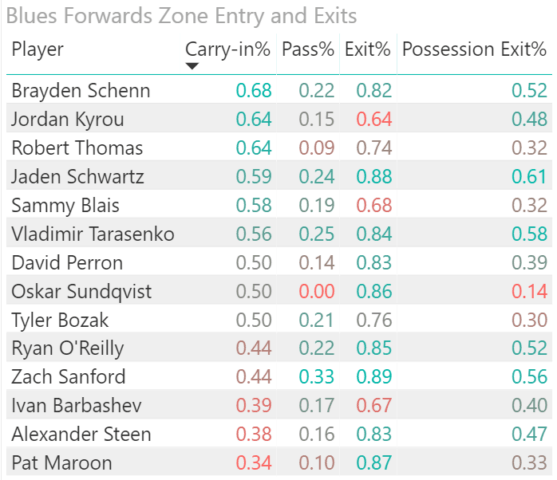On Saturday, the St. Louis Blues clinched a first round playoff series victory over the Winnipeg Jets by winning game six. Jaden Schwartz led the Blues to a 3-2 victory, scoring all three Blues’ goals. This offensive outburst from Schwartz came two days after he scored the game-winning goal in a remarkable comeback victory in Game 5 of the series.
In Game 5, the Blues overcame a two-goal deficit in the third period against the Jets. It was a stunning outcome as the Blues scored three unanswered goals. Moreover, the goals came from some Blues stars who had, for the most part, made very little impact on the series up until that point.

This series victory had everything to do with a decision made by coach Craig Berube late in game five to replace Schenn on the first line with David Perron, and move Schenn into the center position on the second line.
Blues’ Top Forwards Underperformed Early
In a recent article we published, I said I was concerned with the second line of Schwartz, Perron and Oskar Sundqvist, based on how poor their advanced stats were in the regular season. It is important to note that any statistics can be misleading in the playoffs because there is not a large enough sample size to really draw meaningful insights. With that being said, the advanced stats during the playoffs actually favored that second line, but I think that was largely driven by the play of Sundqvist and Perron.
Meanwhile, the Blues’ top players, including Vladimir Tarasenko, O’Reilly, Schenn, and Schwartz underperformed through the first four games of the series. By most assessments, those are the Blues’ top four forwards, and if the Blues want to be successful, they need those forwards to be playing well. The chart below shows the Blues’ forwards ranked by Expected Goals For Percentage (xGF%) through game five of the playoffs, which is a good metric to determine whether a player is creating more opportunities than their opponents.

A player with more than 50 percent xGF% is creating more opportunities than they are giving up. Only a few Blues forwards, including Sundqvist and Perron, had above a 50 percent xGF% for the playoffs. Meaningfully, the Blues’ top forwards all had poor xGF%. I believe that this was being caused by line choices that were not optimizing the individual players’ games based on how those players play.
Zone Entry & Exit Data Gives us Insight Into Playing Style
We can see how a player drives offense based on his zone entry and exit data. Below is a chart ranking the Blues’ forwards during the regular season by their zone entry and exit with possession statistics.

Schwartz bases his game on exiting the defensive zone with possession of the puck, which allows him to drive offense by distributing the puck to his teammates in the neutral zone. He plays really well with Schenn because Schenn does an excellent job of carrying the puck into the offensive zone. Schwartz and Schenn allow the Blues to maintain possession from their own zone into the opposing zone and create offense from the rush.
On the other hand, Perron and Sundqvist create offense from a strong forecheck. They dump the puck out of the defensive zone and into the offensive zone at a much higher rate than Schenn and Schwartz. When the Blues have Perron and Sundqvist together, their line primarily drives play through a dump and forecheck, which is not optimal for Schwartz’s style of play. However, by splitting Perron and Sundqvist up, the Blues can use them in a role where they can fight for loose pucks similar to Zach Hyman on the Toronto Maple Leafs. Instead of driving the play, they can support the play of their linemates.

A first line of O’Reilly, Tarasenko, and Perron allows Tarasenko to be the primary play driver by carrying the puck into the zone, allowing the Blues to benefit from his shot off the rush. When Schenn is on that line, he is carrying the puck more often than Tarasenko. Any rebound from Tarasenko can be retrieved by Perron or O’Reilly, and the line can set up a nice cycle. Both the top two lines can, therefore, optimize the play of each of the individual players.
Optimizing Line Combinations
The Blues’ top three forwards are Tarasenko, O’Reilly, and Schenn, and they found success in the regular season together because of their high skill level. However, their playing styles are actually not optimized by playing together. Through looking at zone entry and exit data we can understand a player’s style of play through advanced statistics and make better line decisions.